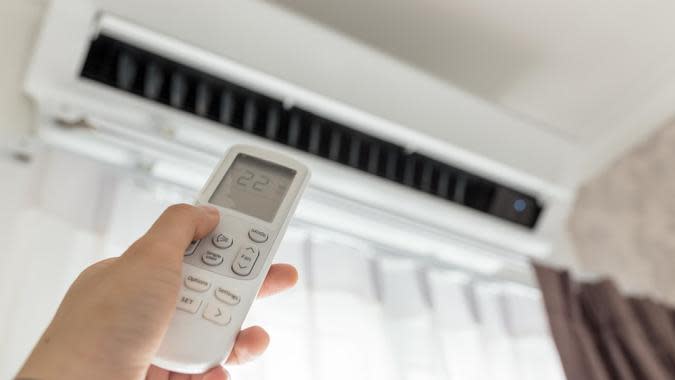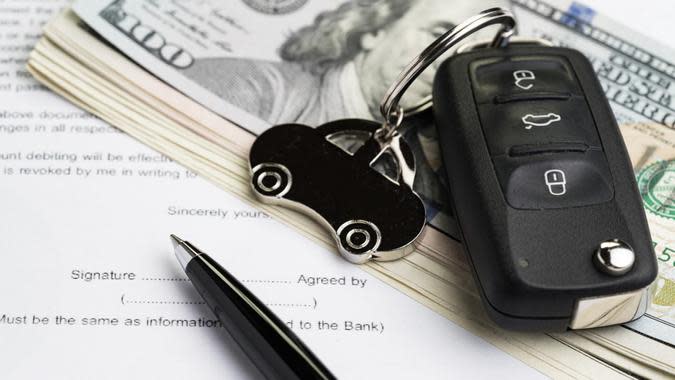Internet, Child Care and More: How Much Should You Spend on These Bills?

With springtime now in full effect, many of the financial New Year's resolutions that started with such passion at the beginning of the year are now distant memories. It's safe to assume that many of those money vows were broken because it's just so hard to keep track of all the expenses that make the modern household run.
Read: Unplug These Appliances That Hike Up Your Electricity Bill
Check Out: 9 Bills You Should Never Put on Autopay
Instead of a monthly cable bill, there are two or three or four streaming services set on autopay. You might have signed up for broadband at an introductory rate that ended long ago without even realizing it changed. The cost of climate control goes up and down with the seasons and thanks to inflation, everything from gas to groceries seems to cost more every day.

Broadband Internet
For most of America, high-speed internet is a necessity, not an amenity -- but people tend to pay so much for it that you'd think it was a luxury.
"The average person has to spend about $35-$45 per month to get a fast internet connection in the U.S.," said Tom Paton, founder of Broadband Savvy. "But 31% of people pay too much for broadband, in that they shell out for much higher speeds than what they actually need. For most people, it can be very difficult to work out exactly what download speed you need when buying broadband, which is why nearly a third of households pay more than they need to each month. ISPs might have a plan with a 100 megabit download speed, but how do you know if this is too much or too little bandwidth, based on how you use the internet?"
To save money on your broadband bill, Paton recommends using a bandwidth needs calculator, like the one his own site offers.
"Alternatively, for some people who don't use the internet all that much, you might be able to save money by ditching your broadband plan entirely, and using the 4G or 5G hotspot on your phone to get online," Paton said.
POLL: Do You Think States Should Suspend Their Gas Taxes?

Heating and Cooling
According to the U.S. Energy Information Administration (EIA), this is what the average household spends to heat its home from October to March:
Natural gas: About $750
Heating oil and propane: About $1,700
Electricity: About $1,300
No matter your fuel source, there's one surefire way to lower those bills if you're above the average or want to be far below it -- and the same goes for the cost of cooling in the summer.
"In regards to utilities, a great way to save money is to buy a smart thermostat and then switch to a time-of-use plan with your energy providers," said Matthew Robbs, founder of Smart Saving Advice. "Using a smart thermostat, you can preheat or precool your home and then not run your heat or AC when the energy costs are the highest. Most families could save a considerable amount over the summer by doing this one simple thing."
He knows from experience. Robbs said his own family reduced their summer electric bill by 30% when they installed a smart thermostat. They precooled their home and then didn't run the AC at all during the most expensive energy times, which was 3 p.m.-6 p.m. in their region.
"Although our home can become a bit stuffy toward the end of that time during the heat of summer, saving 30% on our electric bill was certainly worth it for us," he said.

Child Care
For families across America, the biggest roadblock to financial stability is the struggle to find affordable child care -- in many areas of the country, there's simply no such thing.
"Childcare is one of our biggest expenses, often costing upwards of $10,000 a year," said Lars Koch, finance specialist with Kredit Finance.
That's no exaggeration. A 2021 study from Care.com found that more than half of families -- 57% -- spend more than $10,000 per year.
But just as it is with utilities and broadband, there are ways to save here, too.
"Why not think about joining a babysitting cooperative or setting up a babysitting exchange with other parents? If your schedule is similar to that of another family, consider getting the kids together at one location and sharing the cost of a sitter next time you need one," Koch said.

Car Payments/Transportation
Getting around gobbles up a huge portion of the average household budget -- 20% for rural households and 15.7% for urban households, according to the Bureau of Transportation Statistics. Only housing accounts for a greater portion of the average budget.
"Transportation is the second-biggest financial item for the vast majority, with normal month-to-month costs of about $819, including vehicle installments, fuel and protection," said Lyle Florez, a financial expert and founder of EasyPeopleSearch.
For motorists, one way to lower that exorbitant cost is to buy less car than you can afford and much less than the bank clears you to borrow. In 2022, the average monthly payment for a new car is a record $636.

The Whole Shabang
Going over your bills piecemeal is one approach, but another strategy is to tally all your monthly bills together to find out what percentage of your income or budget is dedicated to your necessary expenses. Then, you'll get a clear picture of whether or not you're spending too much.
"When determining how much of your monthly income to allocate toward common expenses, the 50/20/30 rule can be a helpful place to start, i.e., dedicating 50% of your monthly income toward needs, like food, rent, utilities, transportation, etc., 30% to non-essentials, and 20% to savings," said Brittney Castro, a certified financial planner with Mint. "While this is just a starting guide, it does help you sort through your fixed, saving, and variable spending to determine what will work for you. If altogether, your essential expenses are eating up more than 50% of your monthly income, then you may need to consider identifying any areas where you can afford to cut back."
This article originally appeared on GOBankingRates.com: Internet, Child Care and More: How Much Should You Spend on These Bills?
